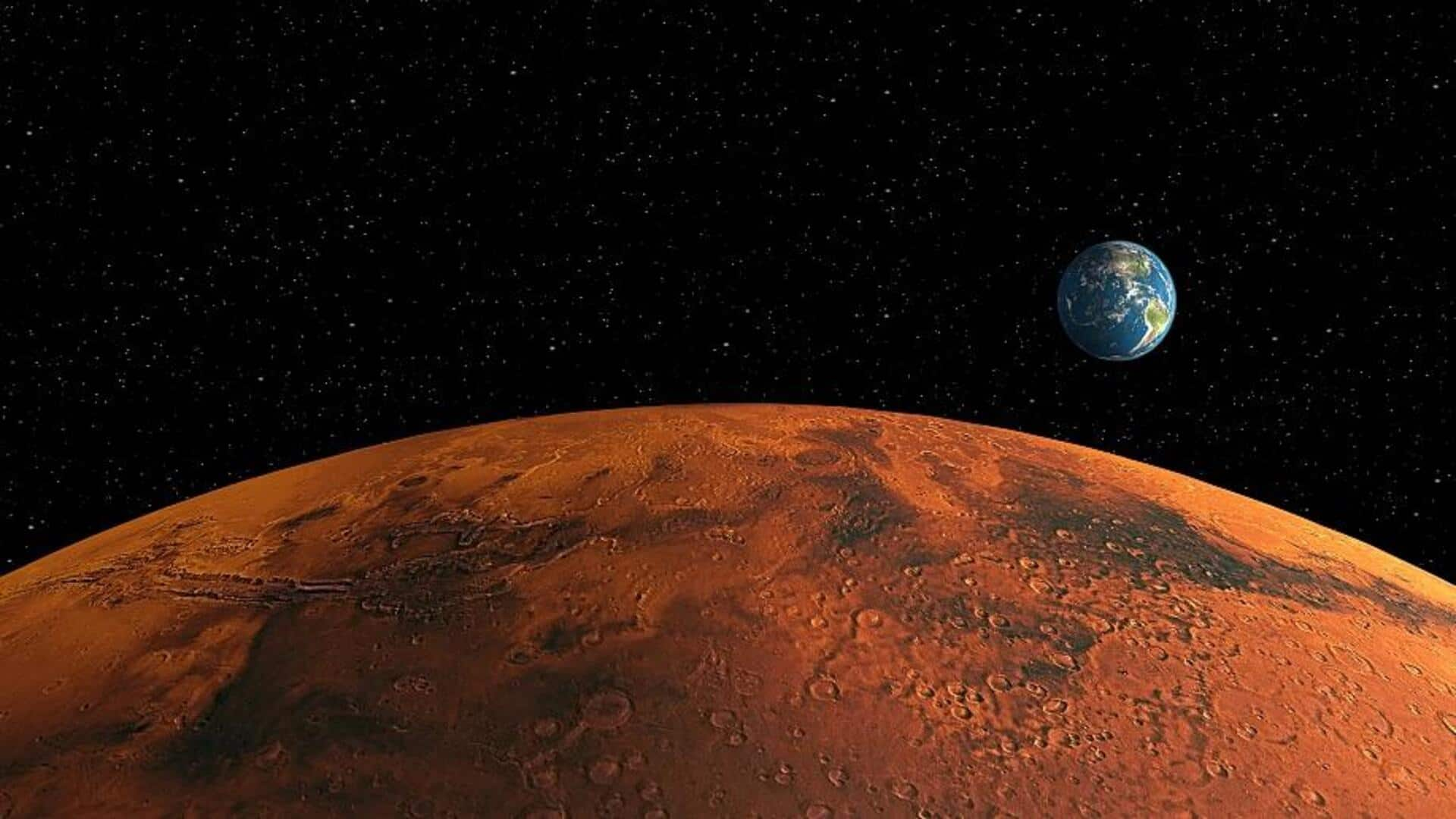
NASA's Odyssey provides spectacular view of Mars's horizon
What's the story
NASA's Odyssey orbiter has snapped an awe-inspiring image of the Martian horizon, offering a view akin to what astronauts might witness if they were orbiting Mars. The image was captured from an altitude of approximately 400km. Astronomer Jonathon Hill of Arizona State University, said, "If there were astronauts in orbit over Mars, this is the perspective they would have. No Mars spacecraft has ever had this kind of view before."
Twitter Post
Take a look at NASA's post
Be kind, but don't rewind. This isn't VHS. It's a new view of Mars from Odyssey, now in its 23rd year at Mars.
— NASA (@NASA) November 28, 2023
These craters, clouds and dust are seen from the same POV orbiting astronauts would have. See the full panorama: https://t.co/wFIzEL0471 pic.twitter.com/BTfVNXnxXU
Details
The image took unique maneuvering and months of coordination
To obtain this breathtaking image, Odyssey's Thermal Emission Imaging System (THEMIS) was utilized, involving months of coordination. THEMIS is typically employed for mapping Mars's surface and remains in a fixed position on the orbiter, pointing directly at Mars. Scientists had to command the entire Odyssey orbiter to tilt 90 degrees, aiming THEMIS at the edge of Mars's horizon. The spacecraft maintained this position for a full orbit, letting THEMIS take 10 images that were later combined to create the panorama.
Images
The orbiter also captured one of Mars's moons called Phobos
The image unveils Mars's arid, crater-filled surface and its atmosphere with traces of cloud and dust haze. As THEMIS is a thermal camera, it can provide temperature data on its subjects, including the Red Planet's water ice clouds and carbon dioxide ice clouds. Analyzing these clouds can offer insights into how the planet's atmosphere operates. During this process, THEMIS also captured an image of Mars's potato-shaped moon, Phobos, supplying valuable data that could help better understand its origin.
Insights
Scientists intend to capture more images of the Martian horizon
Researchers now plan to capture more images of the Martian horizon at various times throughout the year to observe how the planet's atmosphere changes with the seasons. The orbiter could also help capture the elusive green nightglow on Mars. The success of Odyssey's endeavor showcases its capabilities and paves the way for new opportunities to probe the Martian landscape and atmosphere. Such insights could be vital for planning crewed missions to the Red Planet in the future.